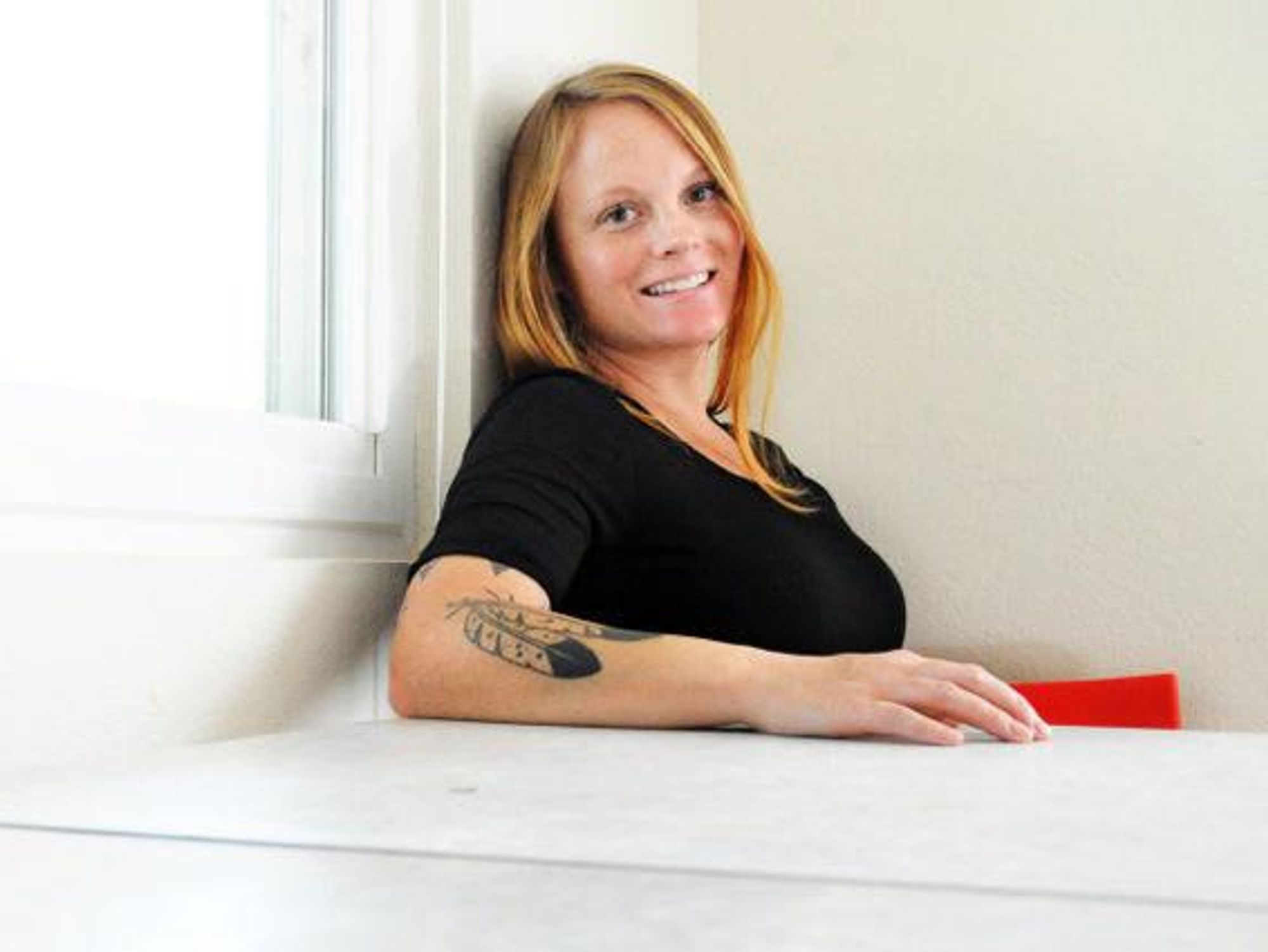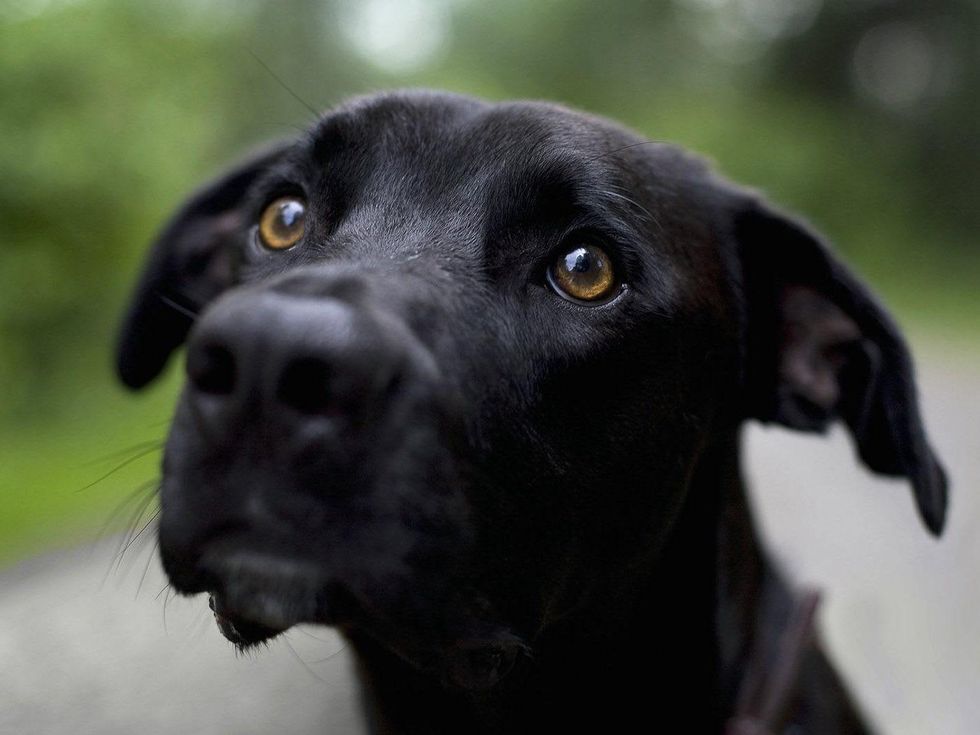Dishing on Dogs
3 tools all pet owners need to keep their dogs from jumping

Editor's Note: Karen Ryan is the owner of Midtown Groom & Board in Austin, an activity-based kennel, doggie daycare and creative grooming salon. She has worked professionally with animals on a day-to-day basis for more than 12 years, gleaning insight into their behavior. She combines practicality and humor when writing about the four- legged kind. We are happy to introduce her doggy-advice column "Dishing on Dogs."
Q. My dog jumps on people. We’ve tried turning around, saying “no” and lifting our knees, but nothing works. Do you have any advice?
A. Being jumped on by a dog as you cross the threshold into a home is second only in its level of annoyance to having your oil checked by a crotch-sniffer. The owner typically tries to block the impending tackle, unsuccessfully.
Meanwhile, the guest commences the all-too-familiar charade of politeness, saying, “Oh, it’s okay! I love dogs!” Go ahead and interpret that as “I used to love dogs until I met yours!”
We humans need to change our behavior, not the dog’s. Fret not, friend. There is hope. You just need a crate, aloe-infused tissue and discipline.
Breaking this bad habit is only seemingly insurmountable. Just know that we humans need to change our behavior, not the dog’s. Fret not, friend. There is hope. You just need a crate, aloe-infused tissue and discipline.
You are a weird alpha dog
You have trained your dog to jump. When it comes time to exit the premises, you are wrought with guilt. So you leave the dog free to roam throughout the house (a.k.a. giant kennel).
Owners minimize their guilt by offering 2,000 square feet and plush couches to sprawl upon — and chew. With that stage set, it is actually the way in which you return that encourages bad behavior.
Your dog knows you are home long before you enter. He hears you. He smells you. Anticipation is building. What happens once you open the door is up to you.
If your dog is roaming free while you are away, he charges up to you when you return, and both of you engage in the frolic of being reunited. If Max is in a crate, he barrels out as you sing his special song at the top of your lungs. You both break into an Irish jig. You know you do.
If your dog roams free while you are away, he charges up to you when you return, and both of you engage in the frolic of being reunited.
This routine validates your human existence and flatters your ego. It’s the entire reason you got a freaking dog! This routine is also completely unnatural in the canine world.
Alpha dogs don’t do jigs. Weird dogs that get attacked and ostracized from the pack do jigs.
If the light bulb has even flickered, you are realizing that you have taught your dog to be hyper when greeting. Your dog, who cannot distinguish between how to greet you and how to greet a guest, has been River Dancing with your friends.
You may have no problem saying “no!” sternly, but your polite guest will not do that. He or she has signed an invisible social contract stating that he or she will not a) correct another man’s dog or b) berate a parent in a store for caving into a candy purchase after their child’s high-fructose corn syrup meltdown. These are the unwritten rules.
Correct your bad habits
First, buy a crate. It is necessary so that you can begin to control what happens when people, including you, enter the home.
Second, buy some aloe-infused tissue — necessarly only because the baby sniffling over crate training is you. Third, be disciplined.
If you make your canine companion sit prior to petting, you will notice that jumping has been replaced by a little dairy-air hitting the ground.
For the next month, come home in a new way. After opening the crate and encountering your beloved pet, do not look at, talk to or touch him for the first 20 minutes. Yep. I said it. And, yes, it’s going to be very difficult —for you.
Your dog will be puzzled the first few times it happens, but watch (in your periphery, of course, because you aren’t looking at Max) and be amazed by how quickly he settles into this new, calm routine.
No look. No talk. No touch. 20 minutes.
When time is up, you may greet your dog by making him sit first! Do not wrestle. Pet your dog the way you want him to act. Use long strokes down his back or a nice soft massage on his chest.
Each subsequent week you may reduce the time by five minutes. If you make your canine companion sit prior to petting, you will begin to notice that jumping has been replaced by a little dairy-air hitting the ground.
Petting is the positive reinforcement you offer for the good behavior of sitting. No more waltzing.
Remain disciplined when visitors arrive
Make your dog go to his kennel prior to opening the door to visitors. Your guests can wait the 30 seconds it requires. Doing so allows your dog to witness you approve a stranger’s entrance and to settle down.
Explain your dog’s rules to guests. Give them permission to break their social contract and ask for their help training your dog.
That vital opportunity for him to calm his nerves increases the chance of success once he is released. More important, it gives you time to tell your friend how to greet your pet.
Explain your dog’s rules to your guests. Give them permission to break their social contract and ask for their help training your dog. Instruct them not to look at, talk to or touch Max until you say so.
When it’s time to meet Max, let them know that your dog must sit prior to petting. Insist that they use one word — “sit” — rather than a sentence, such as, “Can you sit for me please, little darling?” Your dog only hears, “Words words SIT words words?”
Prepare to soak up the praise from an impressed guest. Revel in your dog’s good behavior, and give him a treat!
That’s it. Calm yourself and the dog will follow.


